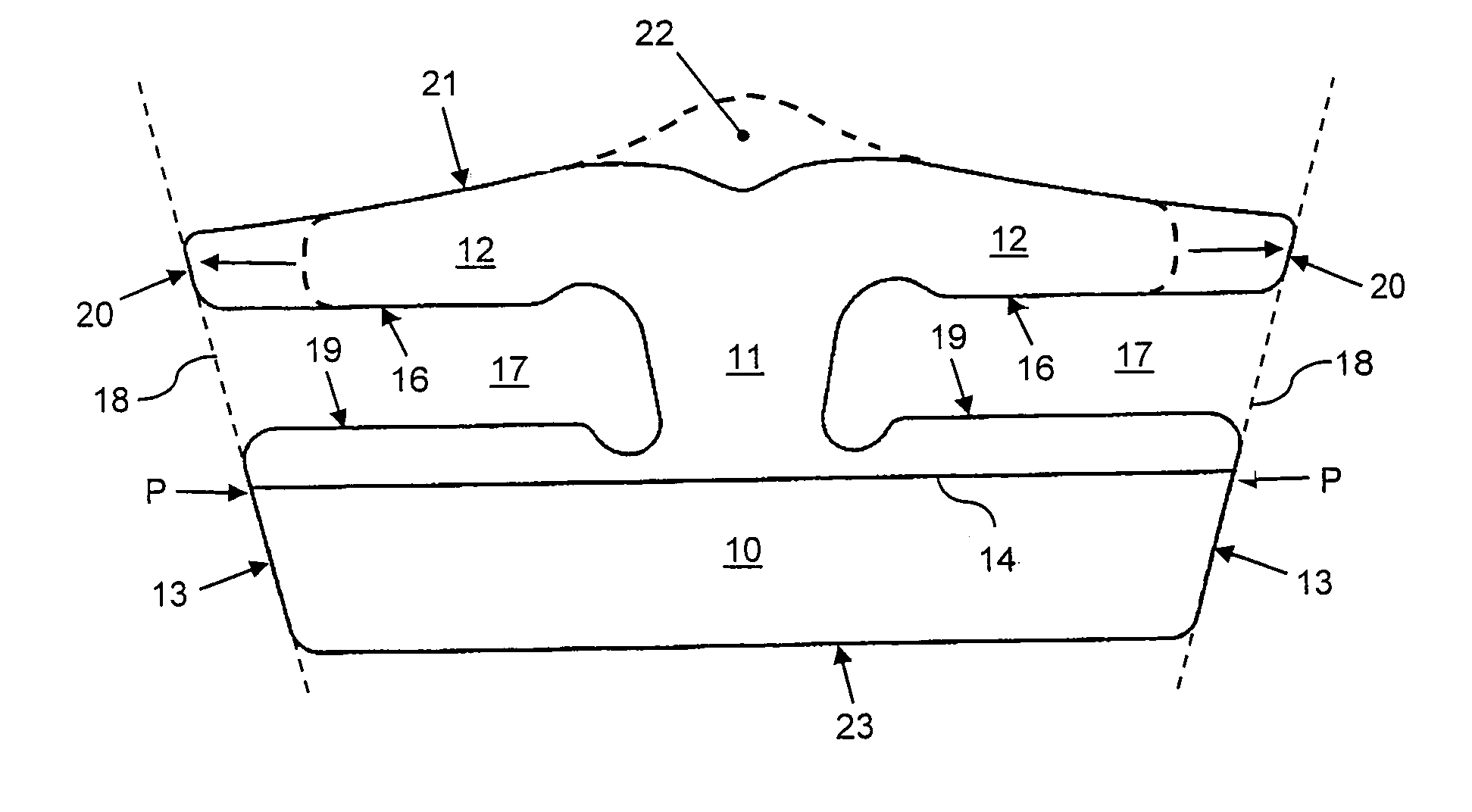Metal driving belt
- Summary
- Abstract
- Description
- Claims
- Application Information
AI Technical Summary
Benefits of technology
Problems solved by technology
Method used
Image
Examples
Embodiment Construction
[0015]FIGS. 1–2 show diagrammatically a cross section of the known driving belt and also a segment of the driving belt in side view. The cross-section shows a two-part tension element 2 in cross section and a transverse element 1 in front view. The transverse element 1 is provided with a substantially trapezium-shaped body part 10 and a substantially arrowhead-shaped head part 12, which parts are interconnected in a neck part 11 of the transverse element 1. Openings are defined on either side of the neck part 11, between the body part 10 and the head part 12, in each of which openings a part of the tension element 2 is accommodated. The front view further shows the contour of a projection 15 in the head part 12, and also the position of a tilting line 14 in the body part 10. The side view shows a number of transverse elements 1, both in a relationship parallel to each other and in a relationship rotated in relation to each other, such as that which occurs between sheaves of a pulley...
PUM
 Login to View More
Login to View More Abstract
Description
Claims
Application Information
 Login to View More
Login to View More - R&D
- Intellectual Property
- Life Sciences
- Materials
- Tech Scout
- Unparalleled Data Quality
- Higher Quality Content
- 60% Fewer Hallucinations
Browse by: Latest US Patents, China's latest patents, Technical Efficacy Thesaurus, Application Domain, Technology Topic, Popular Technical Reports.
© 2025 PatSnap. All rights reserved.Legal|Privacy policy|Modern Slavery Act Transparency Statement|Sitemap|About US| Contact US: help@patsnap.com


